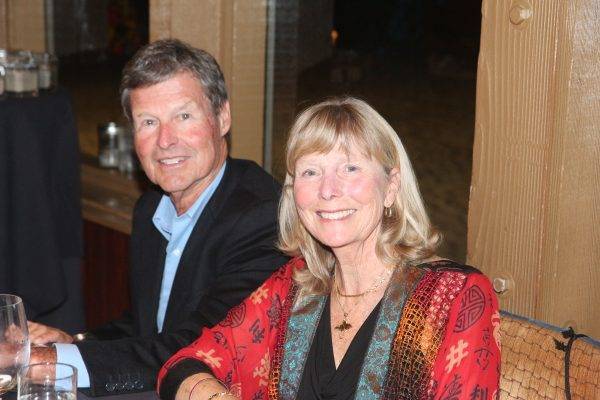
Having famously photographed the 1968 invasion of Prague by Soviet-led Warsaw Pact armies, and fearing reprisals against himself and his family, Josef Koudelka fled his native Czechoslovakia. Like Odysseus before him, 20 years were to pass before he again set foot on native soil.
Through March 22, Koudelka is the subject of a massive retrospective (over 140 prints and books) at the J. Paul Getty Museum. The show covers five decades, several bodies of work, and many countries.
Born in 1938, Koudelka was shooting seriously by the late 1950s, experimenting with extreme exposures and cropping. This led to a string of assignments by leading Czech theater companies to photograph their actors during rehearsal. The work is much too arty and too grainy to fly by today’s standards, but an aesthetic was born and this fed into his first major project.

Broadly grouped as “Gypsies,” and culminating in an exhibition of 27 seminal works in 1967, this series was the result of countless travels to and stays within Gypsy, or Roma, villages throughout Eastern Europe. These images were pared down from thousands of exposures, and the current exhibition displays the 22 surviving prints from that initial showing.
Black-and-white, often gritty and grainy, these prints seem older, as if taken in the 1930s, ‘40s, or ‘50s. There’s a mournful, somber, and insular quality to many of them, even when the subjects are holding or playing musical instruments. Have you ever seen the films of Theo Angelopoulos or Bela Tarr? Or Emir Kusturica? They seem to echo the images in “Gypsies” and, intriguingly, as co-curator (with Amanda Maddox) Matthew Witkovsky says of Koudelka, the work “prompted him to reflect on problems of nationality and geopolitical belonging.”
It was an early identification with rootlessness, a foreshadowing perhaps, well before Koudelka’s own stateless wanderings had begun. Witkovsky also writes, in the catalogue that accompanies the show, that “placelessness and contested territory are among the photographer’s dearest subjects.” Furthermore, “at his own frequent border crossings throughout the 1970s, Koudelka regularly received the police designation ‘nationality doubtful’ in the United Kingdom, where he obtained asylum.” And hence the title of the present exhibition.
This period of exile in the United Kingdom spanned the entire 1970s, during which time Koudelka lived a somewhat nomadic life, often relying on the generosity of friends and acquaintances and even strangers to let him stay in their homes, thus enabling him to live economically while finding his footing in a new land and while learning a new language. He also traveled extensively within continental Europe during this time, a true vagabond one imagines, and his book “Exiles,” with text by Czeslaw Milosz, is a summation of these perilous and yet perhaps invigorating times when Koudelka often slept under the stars.

When we meet him today, at the age of 76, Koudelka generates an exuberance and a passion that clearly must have endeared him to others who felt confident about extending their hospitality. He has the kind of personality that inspires trust.
In 1980, Koudelka left Britain for France, and in 1986, with the help of Henri Cartier-Bresson, became a French citizen. A few years later he was able to set foot in Czechoslovakia: He had been away, in exile, from the age of 32 to the age of 52.
By this time, the Berlin wall had come down and several East European countries had shaken off Communist rule and Soviet domination. A landmark event for Koudelka occurred when he traveled to Russia for an exhibition of his work, one that included images from the Prague invasion of 1968. “I brought the tanks back to Moscow,” he says, a little boastfully, and a little wistfully. Twenty years earlier that would have been unthinkable, when the pictures were only credited “P.P.” – for Prague photographer. Yet the images still resonate today because they are, as Koudelka notes, images about freedom and those who want to take that freedom away.

For the most part, the human subjects in “Gypsies” face or engage the camera, whereas in “Exiles” they rarely do, as if unaware of Koudelka’s presence. Since 1986 it’s been different yet again, with the photographer using panoramic cameras to create shots that are printed up to six feet in length, and which are devoid of human beings even though their presence is felt throughout.
This presence, however, is a kind of contamination. The recent bodies of work, and one may assume that they are ongoing, include “Archeology,” “Chaos,” and “Wall.” They are, to generalize, an indictment against Mankind’s callous treatment of the landscape. “Chaos,” for example, writes Gilles A. Tiberghien, “juxtaposes images of ruined temples and industrial strip mines with pictures of postwar Lebanon, with its gutted buildings and walls peppered with bullet holes.”
While there is no overt condemnation over the security barrier that the Israelis have built, snaking across disputed territory, it is nonetheless an ugly scar through a landscape that looks anything but holy. The images from “Wall” are powerful, as are those from “Archeology,” which depict once-mighty cities, their temples or palaces in ruins, and even the ruins are disintegrating.
Witkovsky writes that after his experiments with abstract imagery in the early 1960s, Koudelka henceforth “would tread between the domains of fine art and reportage. […] Travel and its attendant discoveries would remain a lifelong spur to creativity for the photographer.” As the recent work amply shows, the vagabonding may be finished, but the journey is far from over.

Josef Koudelka: Nationality Doubtful is on view through March 22 at the Getty Center, 1200 Getty Center Drive, Los Angeles. Hours, Tuesday through Friday and Sunday from 10 a.m. to 5:30 p.m., and Saturday from 10 a.m. to 9 p.m. Free; parking $15, reduced to $10 after 5 p.m. on Saturday and for evening events. (310) 440-7300 or go to getty.edu.










